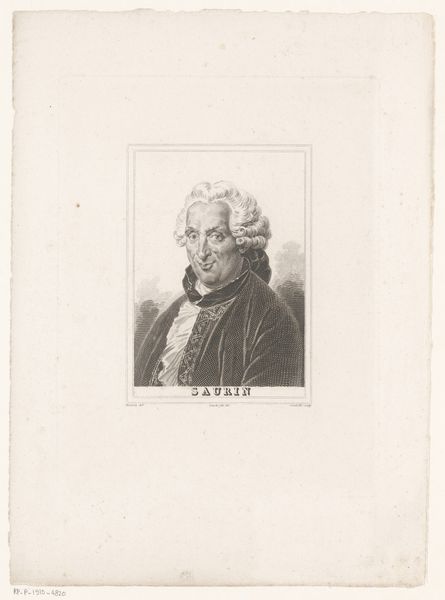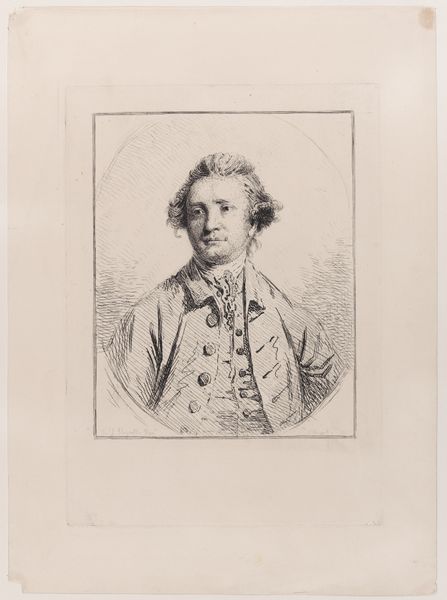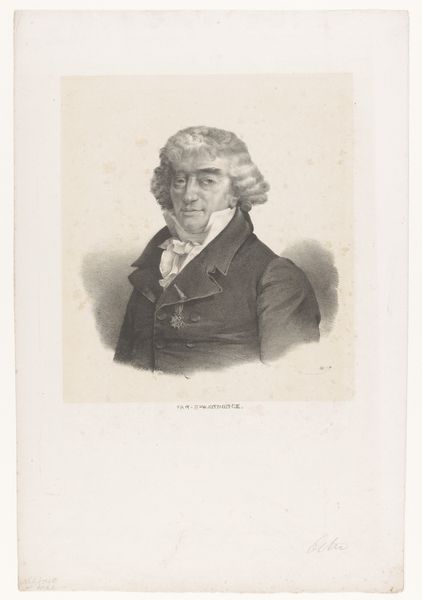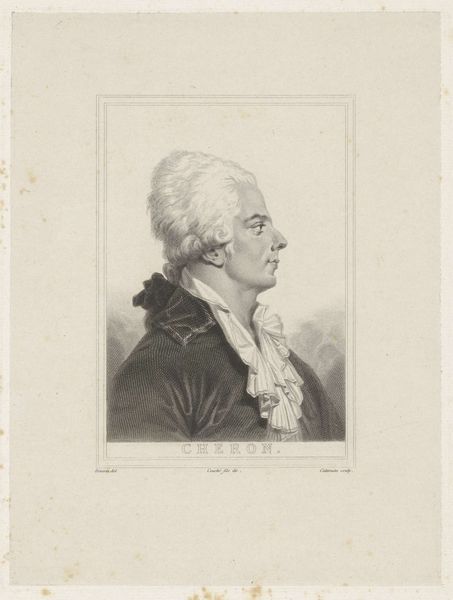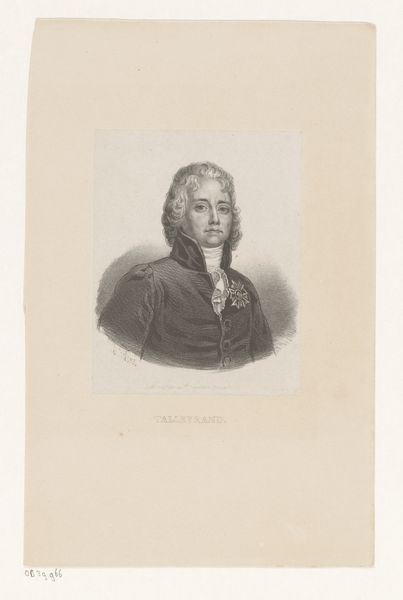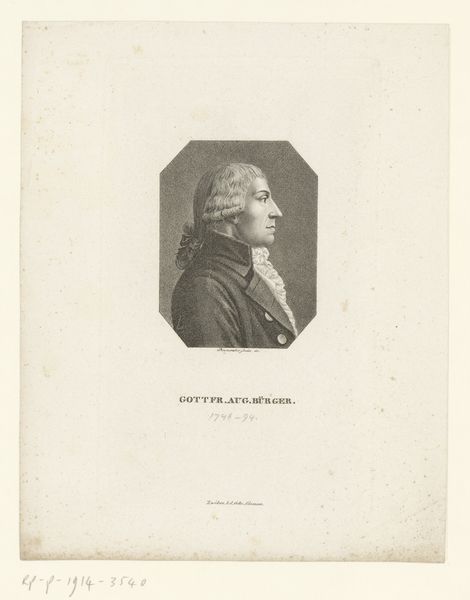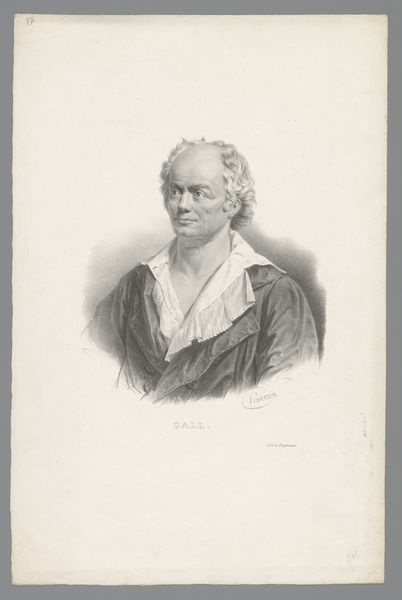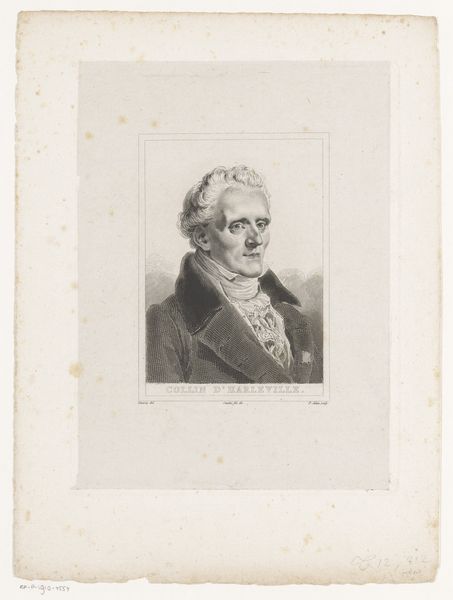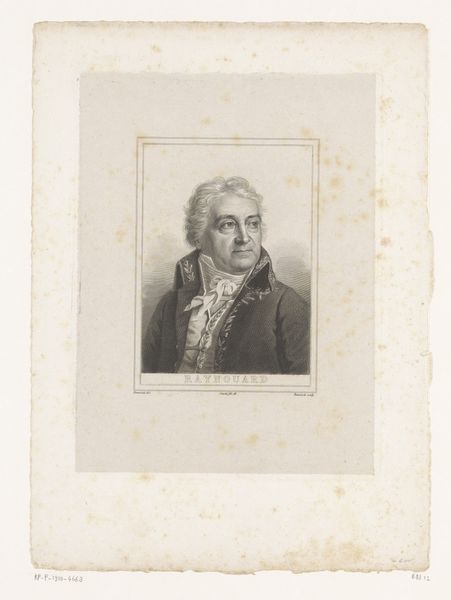
print, engraving
#
portrait
#
pencil drawn
#
neoclacissism
# print
#
pencil sketch
#
pencil drawing
#
pencil work
#
engraving
Dimensions: height 143 mm, width 106 mm
Copyright: Rijks Museum: Open Domain
Curator: Looking at this portrait, the immediate impression is one of understated power. Editor: Absolutely, it feels very grounded despite the grand attire. It's an engraving, made sometime between 1808 and 1868 after a pencil sketch by Carl Mayer, titled "Portret van Jean-Baptiste Kléber." Curator: Kléber was, of course, a significant general during the French Revolutionary Wars. He represents a specific moment when military prowess and Enlightenment ideals seemed intertwined, and the engraver clearly chose to showcase this. The careful lines of the face suggest resolve, yet the almost dreamy rendering in the background creates this duality, it's rather intriguing. Editor: That contrast definitely speaks to the era's complexities. Consider Kléber's role within the broader scope of French colonialism and its impact on the territories it invaded and controlled. It forces one to reckon with the cost of this ambition. How does Mayer’s portrayal influence, or perhaps even obscure, our ability to do so? The medium—print—democratizes the image of power while still celebrating individual achievement. Curator: Interesting point. We have, after all, witnessed through many cultural epochs the idealisation of military heroes, often divorced from the real social consequences of their actions. The symbolic weight of Kléber's gaze, though, isn't overtly triumphant or celebratory; rather, it carries the burden of leadership and maybe even internal conflict. The meticulous detailing of his uniform versus the softer, almost romantic treatment of his features reinforces this inner tension. It feels like the engraver may have strived for emotional depth. Editor: Yes, and it is equally significant that the piece exists in reproduction form; think about how many people throughout history might have consumed or internalized an image like this. In thinking of this in the twenty-first century, it’s worth considering what this says about power and its enduring presence. It demands, maybe, a reckoning with its legacy, and its impact on social movements from this historical period, like that of Feminism, which were rooted in these same power imbalances. Curator: You're inviting us to remember and actively renegotiate. The potency of such enduring symbolic echoes... it resonates powerfully. Editor: Precisely, this prompts a reflection, prompting questions that art helps us understand regarding identity, historical understanding, and social justice, even centuries later.
Comments
No comments
Be the first to comment and join the conversation on the ultimate creative platform.
